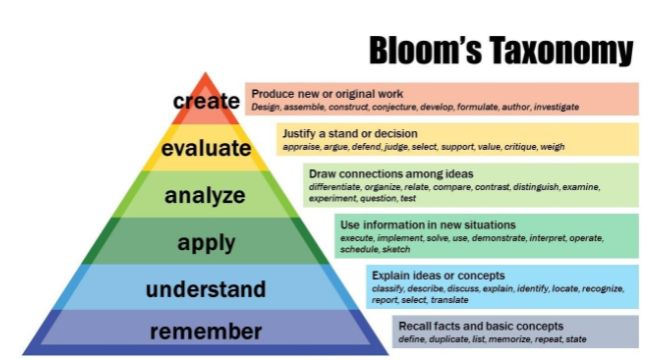10.1: Effectively Reading College Texts
- Page ID
- 110150

“The Thinker by Auguste Rodin at the Cantor Arts Center of Stanford University” by Oleg Alexandrov is licensed under CC BY-SA 3.0
“Critical thinking is thinking about your thinking while you’re thinking in order to make your thinking better.” --- Richard Paul
Introduction: Metacognition
Although the term “metacognition” may sound difficult, the concept is not. The Latin prefix “meta” means “beyond,” and “cognition” is our thinking or intellectual processes. Therefore, metacognition is what is above and beyond our thinking, and the term means “awareness or analysis of one’s own learning or thinking processes” or in other words, “thinking about our thinking.” Picture an umbrella placed over a brain. Cognition is occurring in the brain, and the umbrella represents metacognition.
Have you ever thought about your thinking? Have you analyzed how you learned about a concept or how you studied? If so, did you discover your strengths and room for improvement in the intellectual processes you used? In the 1950’s, Dr. Benjamin Bloom, an educational psychologist, and collaborators published a framework called Taxonomy of Educational Objectives which has been used to explain learning for educators34. Here’s a picture of the framework:

“Bloom’s Taxonomy” by Center for Teaching, Vanderbilt University is licensed under CC BY 2.0
What Dr. Bloom indicates in this picture is that learning is a comprehensive, multi-step process. In order to learn a concept fully and move that concept into our long-term memory, we must do all of the steps listed above from the bottom up through the top. Think about a quiz you took five years ago. If you studied enough to remember the information for the quiz but didn’t go beyond that first bottom level, do you remember anything from that five-year-old quiz? Probably not.
Conversely, think about a topic you enjoyed learning about, and perhaps you did a comprehensive project or paper on that topic. Would you be able to summarize the main points of that topic five years later? You probably would. You may not remember all of the details if you haven’t studied that topic again, but you could explain the topic well enough for another person to get a sense of the concepts. When you did a comprehensive project about that topic, you moved through all of the levels in the picture from the bottom to the top.
PRO TIP:
Make Every Moment Matter! Each day we are pulled in a thousand directions. Between work, family, and school, sometimes we just don't have big chunks of time to devote to our studies. This is where the 'Make Every Moment Matter' tip comes into play. If we maximized each fleeting moment in our day we would discover that we actually have numerous little chunks fo time we could devote to reviewing, reading, and studying our course content. For example, if you are sitting in a drive-through line 8 cars deep, dig out your note cards and flip through a few concepts or pick up that assigned novel and read a few pages. Resist the temptation to flip through Twitter or Facebook - neither of which will help you succeed in your classes. Or, if you have a long commute, ask your professor if you can record the lecture and then replay the lecture during your commute to keep the information fresh in your mind and pick up on concepts you may have missed or not fully understood while in class. Now, that 45-minute commute has transformed into a 45-minute review session! My students have even used lectures as a sleep aid - you'd be amazed how much you remember (and the wild dreams you have) when you listen to a lecture recording as you fall asleep! The great thing about adopting a Make Every Moment Matter habit is that it builds our self-confidence as we end the day knowing we took full advantage of the time afforded us during the day to move closer to our goal of understanding and success! Now, go Make Every Moment Matter!
- Jennifer Billman, Ph. D., Associate Professor of Biology
10.1 Effectively Reading College Texts
How many times have you sat down, with the best of intentions, to read an assigned chapter and realized about 40 minutes later that you have no idea what you just read? Now you have to go back and read again, and you just lost 40 minutes that you’ll never get back. Unfortunately most college texts are not the most interesting books we’ll ever read, and yet, we need to learn the information in order to do well on quizzes, tests and in the class in general.
We know that reading involves a text, our eyes and our brains. Even if we read while paying perfect attention and think deeply about what we’re reading, however, we probably won’t retain the information unless we interact with the text. That means we need to do active reading with some physical action in addition to simply using our eyes and brains. Some examples of active reading with physical actions are taking notes in the margins of the book or on notes pages, stopping and summarizing passages out loud and creating and answering questions about the text.
An active reading system called SQ4R can help us with this task and ensure we don’t waste time reading then re-reading. SQ4R, formerly known as SQ3R, is an acronym listing six steps for active reading and indeed, for moving what we’re reading from our short-term into our long-term memory. This system is designed as a study strategy too so that we can learn deeply from our first reading of a text and if the whole system is used, we don’t need to re-read even when we’re studying for a quiz or test.
S - Survey or scan the whole chapter or section assigned to be read
Q - Turn titles, headings and sub-headings into who, what, where and how questions
R - Read using active techniques, only one section or paragraph at a time
R - Recite or summarize each section out loud in your own words before going to the next section
R - Reflect or relate: ask yourself how the information in this assigned chapter relates to your class
R - Review your notes taken in the "read" step and answer the questions you created in the "question" step
You may be thinking the SQ4R system looks pretty time-intensive, and you’re thinking “I hardly have enough time just to read, let alone do five more steps.” Although you probably will take more time to read a chapter using this system, you actually will save time overall because by using this system, you start studying as you read. Many students read a chapter and perhaps highlight or take notes. Then when students study for a quiz or test, they go back through those notes and maybe even skim over the chapter again. If you use SQ4R, you will be studying in the last three “R” steps, and as a result, you will move the information you’ve read from short-term memory into long-term memory right away. When you’re studying for a quiz or test, you only need to do that last “R” step (Review) rather than going back through the whole chapter.
Here’s a video from HACC’s Tutoring Services with a suggested active reading system: Video How to Read Your Textbook Better [www.youtube.com]
34 Armstrong, P. (2020). Bloom’s Taxonomy. Center for Teaching Vanderbilt University. Link Center for Teaching Vanderbilt University [cft.vanderbilt.edu]


